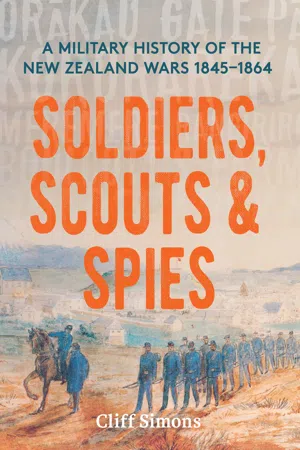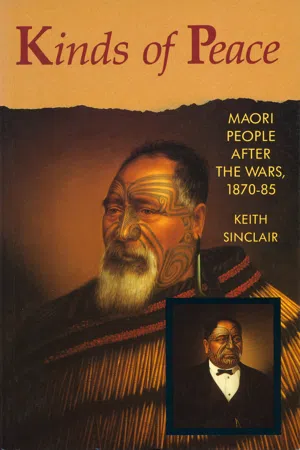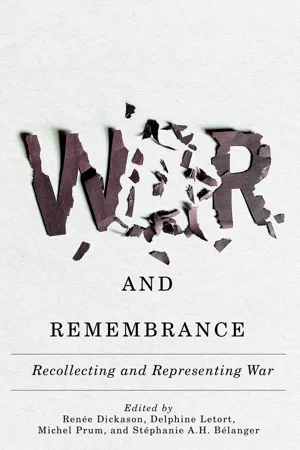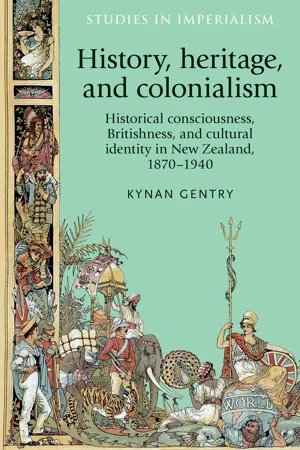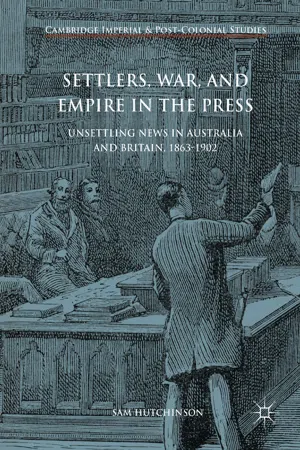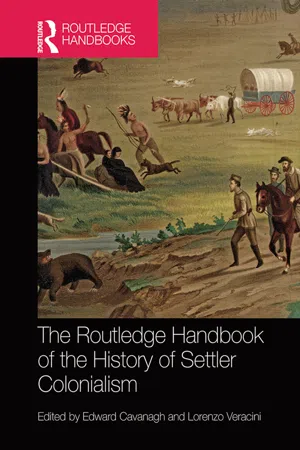History
New Zealand Wars
The New Zealand Wars were a series of conflicts between the indigenous Māori people and the British colonial forces in the 19th century. These wars were fueled by land disputes, cultural differences, and the desire for power and control. The conflicts resulted in significant loss of life and had a lasting impact on the social, political, and economic landscape of New Zealand.
Written by Perlego with AI-assistance
Related key terms
Related key terms
1 of 4
Related key terms
1 of 3
7 Key excerpts on "New Zealand Wars"
- eBook - ePub
Soldiers, Scouts and Spies
A military history of the New Zealand Wars 1845–1864
- Cliff Simons(Author)
- 2019(Publication Date)
- Massey University Press(Publisher)
1THE New Zealand Wars
Many of us have been brought up on a kind of history which sees the human drama throughout the ages as a straight conflict between right and wrong. Sooner or later, however, we may find ourselves awakened to the fact that in a given war there have been virtuous and reasonable men earnestly fighting on both sides. Historians ultimately move to a higher altitude and produce a picture which has greater depth because it does justice to what was thought and felt by the better men on both sides.—Sir Herbert Butterfield1T HE NEW ZEALAND WARS were a series of small campaigns fought between Britain, its colonists and the nascent government of New Zealand, and some of the Māori inhabitants. They spanned a period of nearly thirty years between 1845 and the early 1870s, although some historians consider that they continued through to Parihaka in 1881 and even to the arrest of Rua Kēnana at Maungapōhatu in 1916. The wars have had a dramatic effect on the governance, land ownership and development of the nation through to the present day. They have cast an immense shadow across the nation’s history, they are the origin of many of the issues that have caused ongoing friction between Māori and the Crown, and they continue to fuel anger and disaffection among various interest groups today.The first of the wars flared up a mere five years after the two races had appeared to have made an encouraging start towards building a nation together. In simplified terms, the Treaty of Waitangi (Te Tiriti o Waitangi), signed on 6 February 1840, promised a partnership between the two peoples, and as the various chiefs signed the document, Queen Victoria’s representative, Captain Hobson R.N., who was soon to become the first governor of New Zealand, is said to have uttered the words he had no doubt just learned: ‘He iwi kotahi tātou’; we are now (all) one people.2 - eBook - ePub
Kinds of Peace
Maori People After the Wars, 1870-85
- Keith Sinclair(Author)
- 2013(Publication Date)
- Auckland University Press(Publisher)
1The Anglo-Maori Wars, 1860–72FROM THE FIRST arrival of European explorers in New Zealand in the seventeenth and then the eighteenth century, blood was shed by both Maori and European, so it should surprise only the naive that warfare followed in the nineteenth century. The British had been involved in more wars than any other European nation, principally because they had the most widespread empire. The Maoris were as militaristic a people as could be found, and well organised, on a tribal basis, to wage war.Several books have discussed in detail both the causes and course of the New Zealand Wars. This study will merely attempt to summarise some aspects of those topics, as an introduction to its principal subject, the effects of the wars as far as Maori were concerned. It will not discuss the warfare of the 1840s, in which only a small minority of Maori were involved and in which the majority sided with the government or remained neutral.The wars have been known by several names, all of which imply some view about what caused them, or who was responsible. The British tended to label their imperial wars by the name of their foe, as with the ‘Boer war’ for instance, or the ‘Maori wars’. The Maori called the wars ‘te riri pakeha’, which means white man’s war, quarrel or anger. More recently a few historians have called them the ‘land wars’, which implies that the fighting had only one cause, which few historians believe.The author was tempted to accept the name adopted by the two historians of the ‘New Zealand Wars’.1 - eBook - ePub
War and Remembrance
Recollecting and Representing War
- Renée Dickason, Delphine Letort, Michel Prum, Stéphanie A.H. Bélanger, Renée Dickason, Delphine Letort, Michel Prum, Stéphanie A.H. Bélanger(Authors)
- 2022(Publication Date)
- McGill-Queen's University Press(Publisher)
In the latter part of the twentieth century, this gave way to a new approach, which exposed the underlying assumptions informing the national narrative of identity and the relationship between Maori and Pakeha. From “revisionist historians” to self-termed “neo-revisionists,” the New Zealand Wars have been the focus of research and discussion relating to the colonial project in New Zealand as well as to the necessary transition to a postcolonial era. The recognition of the New Zealand Wars as a pivotal episode in the nation’s history has been very much connected to the national process of reconciliation, in which New Zealand has been engaged since 1985, mainly through the Tribunal of Waitangi. Tribunal historiography has unearthed contending discourses and voices, and generally helped to produce innovative research on topics and issues that used to be considered definitively settled.It is thus symptomatic that Conservative prime mister John Key, in an obvious reiteration of the old traditional discourse on the country’s benevolent treatment of its Indigenous minority, caused a major uproar in late 2014 when he stated that New Zealand had been “settled peacefully.” Historians immediately reacted, recalling the nineteenth-century wars and the devastation they caused.76 As New Zealand again turns to introspection on the occasion of the celebration of the centenary of the First World War and of events traditionally connected to its coming of age (such as the battle of Gallipoli), it is fitting that other defining moments of its history also be recalled and given official attention. There is a growing sense that the “historical amnesia” pertaining to the New Zealand Wars is political because “they do not rouse nationalist pride.” As was ironically asked by a leading scholar on the subject: “Who wants troubling introspection when we can have heart-warming patriotism instead?”77As to the Maori Warrior myth, it remains an enduring vision that is perpetuated by Maori themselves. Aside from the clichés amplified by the media (essentially with regard to rugby hakas), the Maori Warrior is periodically revived in times of protest. This produced a striking effect when, in February 2016, Maori in traditional dress and facial tattoos led the demonstrations against the Pacific Trade Agreement in all of New Zealand’s major cities. - eBook - ePub
People, Power, and Law
A New Zealand History
- Alexander Gillespie, Claire Breen(Authors)
- 2022(Publication Date)
- Hart Publishing(Publisher)
Chapter 3 , despite the promises of the Treaty Te Tiriti, and some initial efforts to accommodate Māori custom, customary law was ultimately superseded by English law, which was then used to settle the land by Europeans and/or secure the full submission of Māori. This situation, coupled with a combination of others factors, including fear, attitudes of cultural superiority, and the personal determination of various Governors to impose their will, were key catalysts for the New Zealand Wars Ngā Pakanga o Aotearoa. The ensuing conflict was met with the full military and legal power of the Crown. Māori paid a heavy price in lost land, resources, and people.This chapter comprises five main phases of conflict, and related laws.The first, in the 1840s, was the conflict between colonial authorities and Ngāpuhi, led by Hōne Heke Pōkai in the North, as well as conflict stemming from the increasing settlement of the Cook Strait area.The second period of warfare occurred in the 1860s, when a disputed land purchase in Taranaki led to war between Te Āti Awa and colonial forces, led by Governor Browne, from 1860–61. The fallout from this conflict led to further war, between 1863 and 1864, as Governor Grey invaded the Waikato so as to crush the Kīngitanga.The third period began in Taranaki, and then spread to Hawke’s Bay, as colonial forces, and Māori allies, in response to the perceived threat posed by Pai Mārire (Hauhau), fought a particularly brutal conflict.The fourth phase occurred between 1868 and 1872, as the government tried to deal with the leaders Tītokowaru, in South Taranaki, and Te Kooti, who fought in the East Coast, Bay of Plenty, and Central North Island.The final phase of conflict occurred in 1881, as colonial forces invaded the pacifist settlement of Parihaka, which had been resisting land confiscation.Included in this chapter are the apologies from the Crown with regard to each conflict. Crown apologies commenced in the latter decades of the twentieth century, and continue through to the time of writing of this work. - eBook - ePub
History, heritage, and colonialism
Historical consciousness, Britishness, and cultural identity in New Zealand, 1870–1940
- Kynan Gentry(Author)
- 2015(Publication Date)
- Manchester University Press(Publisher)
Often described as being similar to the Plains Indian Wars that took place in America between the 1840s and the 1880s, the New Zealand Wars were in effect a series of conflicts fought between some Maori tribes and government forces – made up of British and colonial troops and their Maori allies – and which took place between the sacking of Kororareka in 1845, and the conclusion of ‘Te Kooti’s War’ in 1872. While the causes of the wars were varied and complex, at their heart lay a volatile combination – contested issues of sovereignty following the signing of the Treaty of Waitangi in 1840; the purchase of dubious titles to land by the New Zealand Company; and decreasing Maori willingness to sell land to the government coupled with increasing pressure for land for settlement as the European population grew rapidly.Despite the significance of the wars in New Zealand at the time, and their aftermath (notably land confiscations), in recent years a number of historians have described them as ‘forgotten’ wars.2 The Maori historian Danny Keenan similarly describes the former battlefields as ‘largely a forgotten landscape. There are few signs and few memorials or monuments ... the fields and paddocks are empty ... New Zealanders have not memorialized their own battlefields at home – unlike the Americans and the American Civil War.’3 While they make a valid point, the term ‘forgotten’ is overly simplistic, as, rather than being the result of a lapse of free-floating national memory, political and cultural variables rendered the New Zealand Wars not ‘forgotten’ but ‘ignored’. James Belich has gone even further, describing Titokowaru’s War – one of the key Taranaki conflicts of the late 1860s – as a buried memory, a ‘dark secret of New Zealand history, forgotten by the Pakeha as a child forgets a nightmare’.4 Keenan’s comparison between New Zealand and the United States, however, is valuable. In America – and for that matter Canada (as is explored in Chapter 6 ) – strenuous efforts were made to preserve aspects of the domestic landscape of war landscape from the late nineteenth century.5 - eBook - ePub
Settlers, War, and Empire in the Press
Unsettling News in Australia and Britain, 1863-1902
- Sam Hutchinson(Author)
- 2017(Publication Date)
- Palgrave Macmillan(Publisher)
Managing the tensions of colonial expansion often meant disavowing the reasons for Indigenous resistance. This could entail the wilful elision of history itself. Reviewing the year 1863, the Daily Telegraph declared that the ‘Maori War in New Zealand is absolutely devoid of Imperial significance’. 13 More bluntly, a Times editorial of the same day offered the following summary: ‘The colonies have for the most part happily avoided any contribution to contemporary history.’ 14 To clarify, the Times observed that the ‘Australians of New South Wales and of Victoria are highly prosperous, and they have neither an aristocracy to envy nor even an aboriginal race to fear or to exterminate’. 15 However illusory this historical account actually was—and counterexamples were only too easy to come by—the point was to emphasise Australia’s role as a prospective utopia for British readers. 16 In the same editorial the Times contrasted the Australian situation to that of New Zealand where, unless Māori submitted to their defeat at the hands of New Zealand’s settlers, that ‘savage race … will probably within a few years have ceased to exist’. 17 Australian settlers, by contrast, were silently productive, necessitating no external military commitments. Though the comparison was outwardly complimentary, for colonial readers this depiction could reinforce the view that London was disinclined to fund their military protection. Other British accounts drew on the Australian experience. In a morose register, references to settler violence towards Australia’s Aboriginal population could frame the rhetoric of Māori subjugation. In August 1863, the Standard predicted that the ‘blacks of Australia, and the grand Maories of New Zealand, will be alluded to by the next generation as beings of the past’. 18 In its confusion of historical tenses, a sense of hope tempered regret - Edward Cavanagh, Lorenzo Veracini, Edward Cavanagh, Lorenzo Veracini, Edward Cavanagh, Lorenzo Veracini(Authors)
- 2016(Publication Date)
- Routledge(Publisher)
Paradise Reforged: A History of the New Zealanders From the 1880s to the Year 2000, Auckland: Penguin, 2001.G. Byrnes (ed.), The New Oxford History of New Zealand, Melbourne: Oxford University Press, 2009.M. King, The Penguin History of New Zealand, Auckland: Penguin Books, 2003.C. Orange, The Treaty of Waitangi, Wellington: Bridget Williams Books, 1987 (2011 ed.).G. Rice (ed.), The Oxford History of New Zealand, Auckland: Oxford University Press, 2nd ed., 1992.A. Ward, A Show of Justice: Racial ‘Amalgamation’ in Nineteenth Century New Zealand, Auckland: Auckland University Press, 1973 (1995 ed.).Passage contains an image
27 Settler colonialism in New Caledonia, 1853 to the present
David ChappellOverseas colonies in which European settlers were the demographic majority became what Alfred Crosby called ‘Neo-Europes’.1 Most such migrants went to temperate climate zones similar to their homelands, so they could transfer many of their domestic animals, food crops and lifestyles to the new countries they created. Meanwhile, the indigenous populations often declined due to conquest, land alienation, exploitation and imported diseases, thereby enabling the settlers to become clear majorities of the populations who could develop local resources in commercial ways. The settler countries of the former British Empire demonstrated this transformation, for example in the United States, Canada, Australia and New Zealand, where small indigenous minorities continue to struggle for recognition and restitution. Such countries also received more economic investment and earlier self-government than those with indigenous majorities. Tropical colonies, however, tended to experience influxes of slave or indentured laborers who often came from other tropical zones (especially Africa or southern Asia). Yet the French national state was much less able to create viable Neo-Europes abroad, because domestic population growth was slower and fewer French settlers went overseas. French Canada and Algeria became settler colonies manqués
Index pages curate the most relevant extracts from our library of academic textbooks. They’ve been created using an in-house natural language model (NLM), each adding context and meaning to key research topics.
Explore more topic indexes
Explore more topic indexes
1 of 6
Explore more topic indexes
1 of 4
